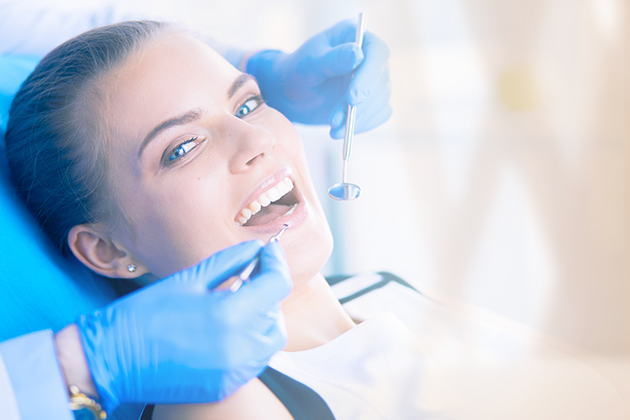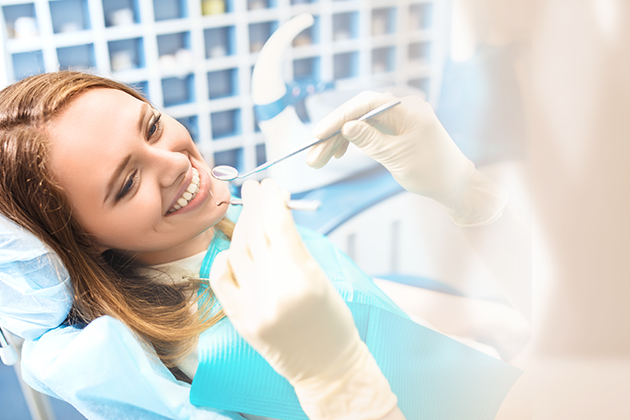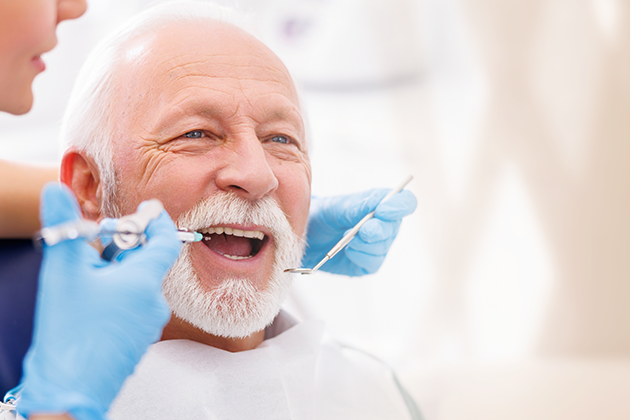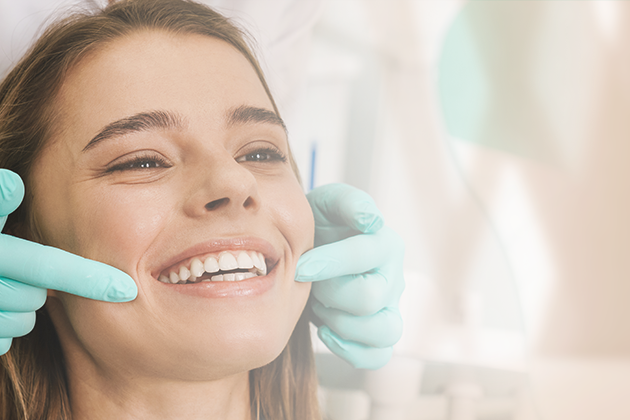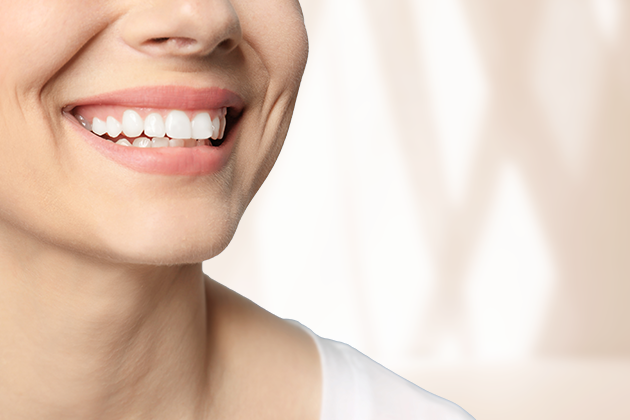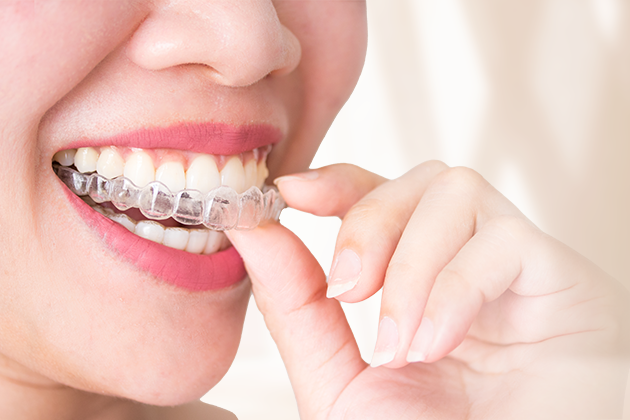Dental Treatments
Oral and dental health refers to healthy and normal function of mouth and teeth, both physiologically and biologically. It also includes the importance of healthy condition in mouth -the beginning of digestive system- as well as the role of teeth in tearing, grinding, speaking and facial symmetry. Oral and dental health is an approach emphasizing prevention or treatment of tooth decay, gingival diseases, toothache and loss of teeth. Deterioration of oral and dental health can cause development of some disorders such as tooth decay and gingival diseases, and effect other organs of the body.
Oral and Dental Health
- What Is Oral and Dental Health?
- Which Diseases Does Oral and Dental Health Department Treat?
- What Is the Importance of Oral and Dental Health?
- Which Methods Are Practiced For Protection of Oral and Dental Health?
- What Are The Diagnostic Methods in Oral and Dental Health?
- What Are The Treatment Methods in Oral and Dental Diseases?
- Which Procedures and Tests Are Performed in Oral and Dental Health?
What Is Oral and Dental Health?
Oral and dental health refers to healthy and normal function of mouth and teeth, both physiologically and biologically. It also includes the importance of healthy condition in mouth -the beginning of digestive system- as well as the role of teeth in tearing, grinding, speaking and facial symmetry. Oral and dental health is an approach emphasizing prevention or treatment of tooth decay, gingival diseases, toothache and loss of teeth. Deterioration of oral and dental health can cause development of some disorders such as tooth decay and gingival diseases, and effect other organs of the body. Regular toothbrushing, flossing, dental checkup and, if needed, having dental treatment are recommended for the protection of oral and dental health.There are some methods to protect dental health, which are proper nutrition, oral care, regular dental checkups and family training.
Proper oral and dental health helps people preserve normal functions of mouth and gum, and prevents pain, disease or disorders. The oral and dental health can be protected thanks to some practices such as regular toothbrushing, flossing, oral hygiene and regular dental checkups. The oral and dental health protects long-term health of mouth and gum, as well as allows prevention of loss of teeth and dental diseases.
Which Diseases Does Oral and Dental Health Department Treat?
The Oral and Dental Health Department has been designed and planned to treat various oral and dental diseases. Among the oral and dental diseases, there may be several different types such as tooth decay, gingival diseases, oral ulcer, loss of teeth, painful and sensitive teeth, gingival swelling and oral malodor. Dentists, in this regard, can practice different techniques such as filling, closure or root canal therapy for tooth decays. Gingival diseases may involve gingivitis or periodontitis causing gingival recession and loss of teeth, treatment of which diseases can include gingival cleaning, possible gingival surgery or the use of prosthesis and implants for prevention of loss of teeth.
Oral ulcer or sores can develop because of viral or bacterial infections, oral tract diseases, oral tumors or other reasons. In these cases, the dentist can advise different treatment methods such as medication, painkiller or surgery for improvement of the sore. Moreover, preventive treatments can also be presented for oral and dental health by the Oral and Dental Health departments. Among those, there may be some treatments such as toothbrushing, flossing, fluoride treatment and dental checkups recommended by the dentist.
Treatable oral and dental health problems are as follows:
- Tooth decay
- Gingival disease (gingival inflammation)
- Periodontitis (advanced form of the gingival diseases)
- Tartar formation
- Dental fractures
- Dental sensitivity
- Oral infections
- Cavities
- Missing teeth/dental implants
- Teeth grinding (bruxism)
- Dental anxiety and phobia
- Other oral conditions effecting overall health and well-being etc.
What Is The Importance of Oral and Dental Health?
Oral and dental health plays an important role in overall health and daily life quality. Oral and dental disorders are generally accompanied by some problems such as pain, swallowing difficulty, eating difficulty and loss of teeth, resulting in poor life quality. Moreover, the problems in oral and dental health can be reflected on other body systems and cause severe health problems. For instance, the problems such as oral bacteria, gingival diseases and tooth decay can cause cardiac diseases, diabetes mellitus and kidney diseases. Also, the oral and dental health effects daily activities of the people, like nutrition, speaking and breathing. A good oral and dental health ensures comfort and ease in daily lives of the people, improving self-confidence.
The oral and dental health is an important issue that may affect numerous factors such as cardiac diseases, diabetes mellitus, immunosuppressive diseases and pregnancy, particularly the digestive system. In the event of development of problems associated with oral and dental health such as gingival diseases, tooth decays, shape and location-associated dental disorders, it can affect not only the digestive system, but also cardiac diseases, immunosuppressive diseases and pregnancy. So, it is important for everyone to take special care of their oral and dental health. Protection of oral and dental health can be possible with some measures such as toothbrushing twice a day at least, having dental checkup once in 6 months, diet and reduction in smoking. Thus, importance of oral and dental health should be accepted and its continuous protection and improvement should be tried. For the protection of oral and dental health, some measures should be taken such as regular dental and gingival examinations, oral care, proper toothbrushing techniques and diet.
Which Methods Are Practiced For Protection of Oral and Dental Health?
There are various methods for protection of oral and dental health. Among these methods, the following can be listed:
- Regular toothbrushing: It is important to brush the teeth and floss at least twice a day for the oral and dental health.
- Oral hygiene: Washing your mouth regularly and brushing the tongue will protect your oral health.
- Dental checkups: Individual should have dental checkup at least once a year and, if needed, have treatment.
- Proper nutrition: You should avoid from consuming acidic and sugary foods and reduce the amount of solid food intake.
- Smoking and alcohol consumption: Smoking and alcohol consumption have negative effects on the oral and dental health.
- Timely treatment of oral and dental pains: Timely treatment of oral and dental pains will protect the oral and dental health.
As long as these methods are carried out, the oral and dental health can be protected and likelihood of disease development can be reduced.
What Are the Diagnostic Methods in Oral and Dental Health?
Various diagnostic methods can be practiced in dental and oral health; however, the primary method is physical examination. During the oral examination, patients are asked to open their mouths wide, in addition, different types of tools are used for a detailed evaluation of oral structures. Dental vacuum suction devices can also be used since the saliva may accumulate in the mouth and prevent accurate evaluation during the examination.
Dental x-ray is the imaging of teeth and jawbones, which is performed with the help of sensors and x rays. This particular method can also be used in diagnosis of diseases and preparation of treatments in advance. The x-ray is considered to have two different types: panoramic and traditional. The panoramic dental x-ray contains less radiation compared to the traditional one.
An intraoral camera is a device containing a small source of light and camera at its tip. This device can be used for analysis of the teeth along with oral structures such as gingiva and palate. The intraoral camera makes early diagnosis of the diseases possible and the generated images can be archived. In this way, diagnosis of the diseases and progression of treatment can be perceptibly observed.
Diagnostic methods in the oral and dental health are the required techniques for early diagnosis and treatment of the oral and dental diseases. There are lots of different methods for diagnosis of the diseases associated with oral and dental health.
The following methods are some examples of diagnostic methods in oral and dental health:
- Physical examination: Physical examination is performed by a dentist to evaluate teeth and gingiva and detect signs of possible diseases.
- X-ray: This is a diagnostic method used to identify the conditions of intraoral structures. The x-ray can be particularly performed in the events like gingival diseases, loss of teeth and root canal disorders.
- Plaque analysis: This is a diagnostic method used to identify the bacterial intensity in the mouth. The plaque analysis is important in early diagnosis and treatment of oral and dental diseases.
- Dental microscopy: This is a diagnostic method used to analyze the intraoral structures more closely. The dental microscopy can be utilized in the events such as gingival diseases, loss of teeth and root canal disorders.
- Laboratory tests: This is a diagnostic method used to identify and diagnose the intraoral bacteria. The laboratory tests can be used in the events such as gingival diseases, loss of teeth and root canal disorders.
- Pain and complaint survey: The patients can be diagnosed by a dentist by asking survey questions about their pain and chief complaints.
The most proper diagnostic method can be determined by the dentist based on type and severity of the disease. Proper and timely practice of the diagnostic methods is of capital importance for treatment and improvement of the disease.
What Are the Treatment Methods in Oral and Dental Diseases?
Surgical treatments are performed when removal, repair or replacement is needed for dental or oral tissues. Nonsurgical treatments, on the other hand, are the treatments used to improve deterioration in dental or oral tissues.
- Surgical treatment methods: Surgical intervention may be required in severe forms of the oral and dental diseases. For instance, gingival diseases, loss of teeth, tooth decay and toothache may require surgical treatment methods. Among the surgical treatment methods, there are some options such as implant placement, root canal therapy and abscess treatment.
- Nonsurgical treatment methods: Surgical intervention may not be required in mild forms of the oral and dental diseases. Nonsurgical treatment methods can be carried out in these circumstances. Among the nonsurgical treatment methods, there are some options such as toothbrushing, flossing, dental checkups, proper nutritional habits, oral hygiene, prevention of intraoral disorders.
Surgical Treatments:
- Tooth extraction: Tooth extraction can be performed by a dentist when removal of a tooth is needed.
- Dental implants: Dental implants used to replace your missing or extracted teeth require a surgical procedure.
- Periodontal surgery: This is a surgical procedure performed to treat gingival diseases.
- Oral cancer surgery: This is a surgical procedure performed for treatment of the oral cancer.
Nonsurgical Treatments:
- Professional dental cleaning: The professional dental cleaning performed by a dentist is a nonsurgical treatment for improvement of oral and dental health.
- Fluoride treatment: The fluoride treatment used for strengthening and protection of teeth is a nonsurgical treatment.
- Teeth whitening: The teeth whitening treatment is a nonsurgical treatment, which is performed for whitening of the teeth.
- Palatal and dental prostheses: The palatal and dental prostheses used for filling of cavities in the mouth are a nonsurgical treatment.
The most proper treatment method can be determined by the dentist, and surgical or nonsurgical treatment method can be chosen based on severity of the disease. Aside from very severe conditions, preventive treatment methods for the oral and dental health will reduce likelihood of development of a disease and minimize the treatment costs.
Which Procedures and Tests Are Performed in Oral and Dental Health?
Procedures and tests performed in oral and dental health are used to diagnose, treat and prevent oral and dental diseases. The following are the most commonly used procedures and tests for oral and dental health:
- Teeth Whitening: This is one of the most popular procedures performed for oral and dental health. This procedure is carried out to improve the color of the teeth.
- Closing Teeth Gaps: This is the procedure performed to close the gaps between the teeth, which also allows the teeth to appear smooth and neat.
- Gingival Treatment: This is the procedure performed for treatment of the gingival diseases. During this procedure, the area with gingival disease is opened and treated.
- Jawbone Treatment: This is the procedure performed for treatment of jawbone diseases. During this procedure, the area with jawbone disease is opened and treated.
- Tooth Extraction: This is a procedure performed to extract painful, deteriorated or decayed teeth.
- Dental Repair: This is a procedure performed to repair fractured, cracked or decayed teeth.
- Gingival Treatment: This is a procedure performed for treatment of the gingival diseases.
- Dental Implant: The dental implants are the titanium screws placed at the site of missing or extracted teeth.
- Gingival Bleeding Test: This is a test conducted in diagnosis of the gingival diseases. During this test, the area with the gingival disease is gently rubbed with a special tool, and it is observed whether there is a bleeding or not.
- Oral and Dental Radiological Imaging: Among the radiological imaging methods used in diagnosis of oral and dental diseases, there are x-ray, OPG (orthopantogram) and CT imaging.
- Dental Panorex X-Ray: This is a radiological test performed to visualize the entire mouth and teeth.
The most proper diagnostic method can be determined by the dentist based on severity of the disease. Procedures and tests are performed for diagnosis, treatment and prevention of the diseases associated with oral and dental health, which should be conducted in a timely fashion.
Doctors
List of doctors under the HOP of the corporation

